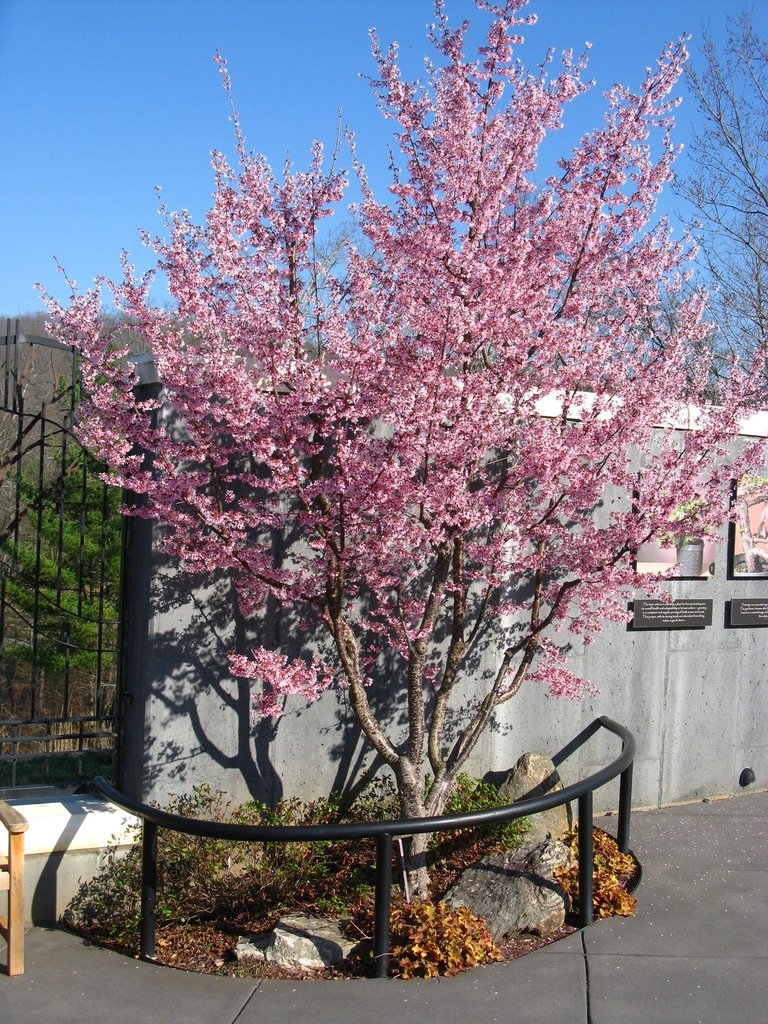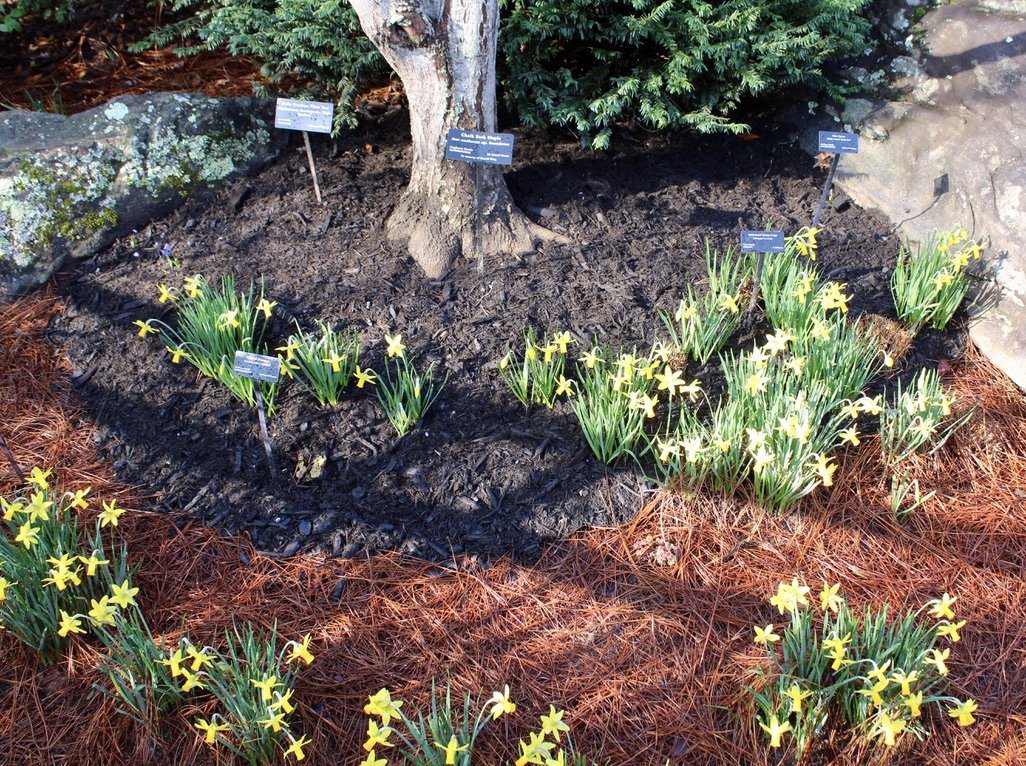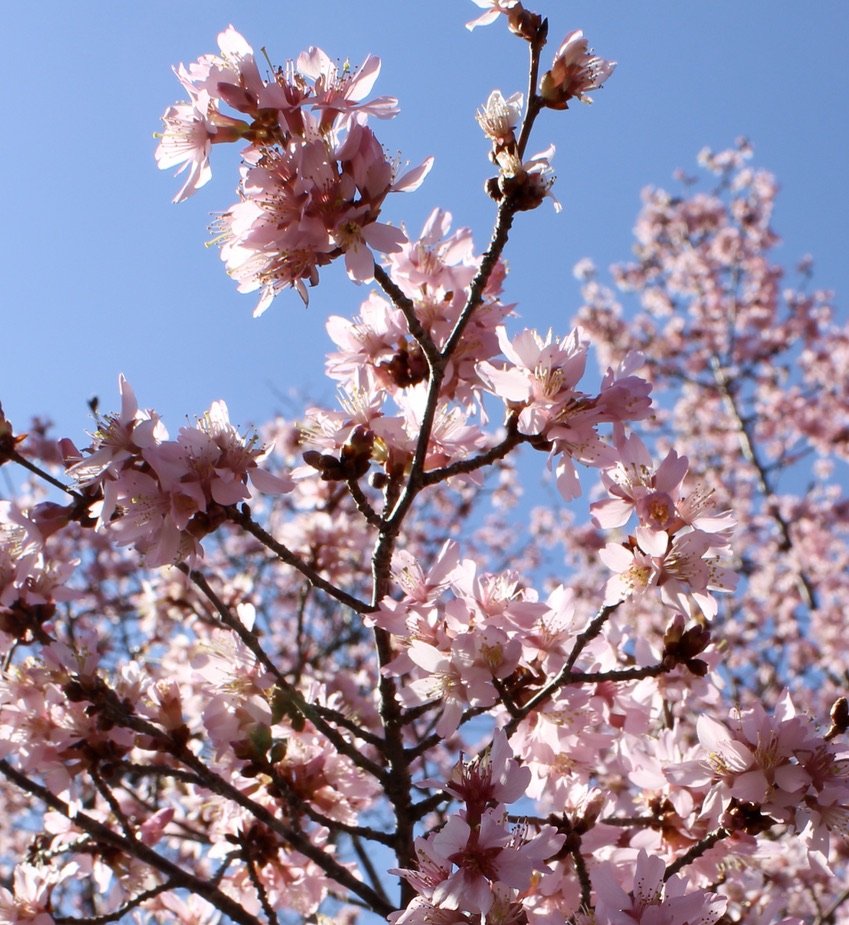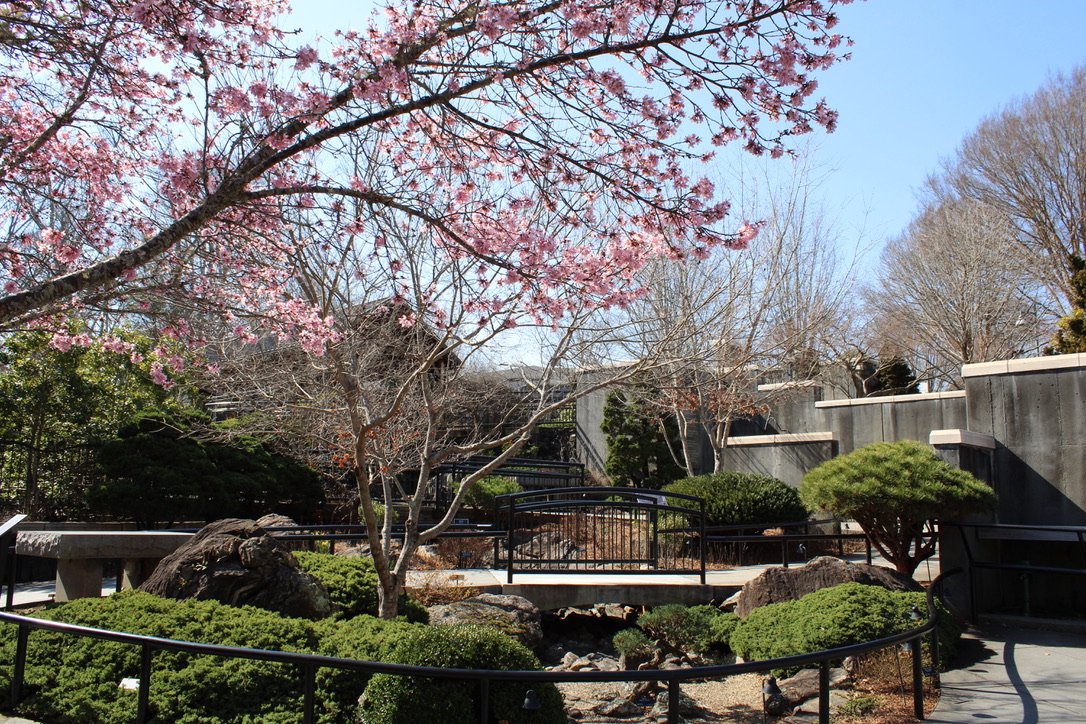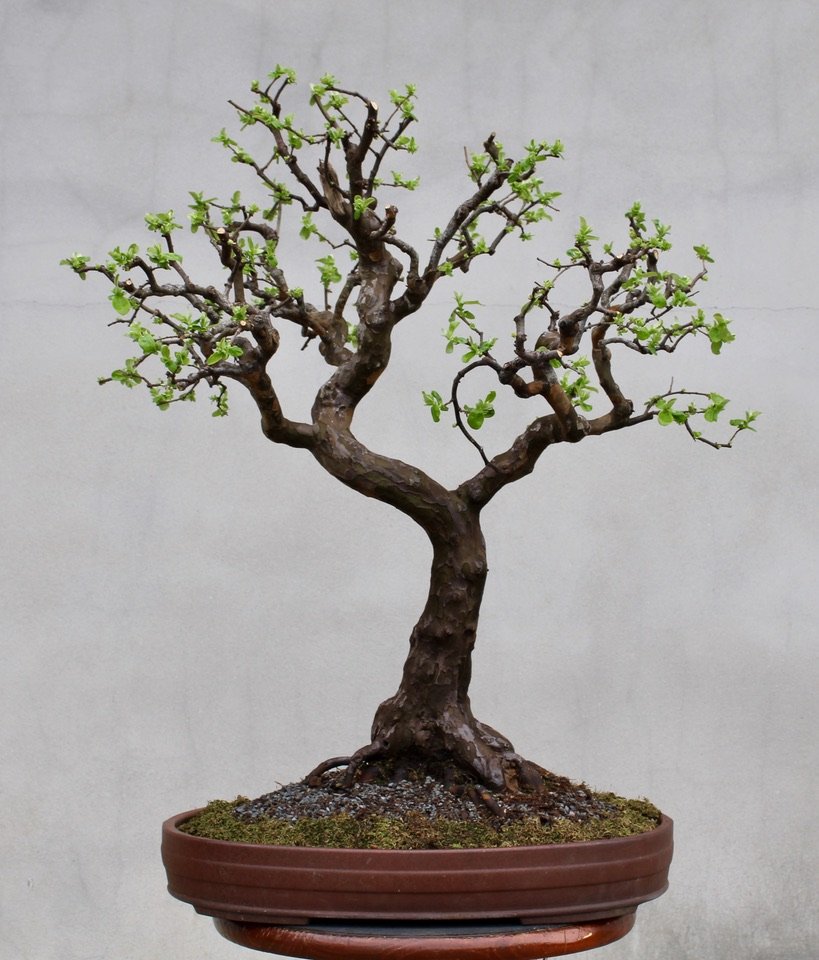March
How many years since you flew a kite? Kite flying is one of those simpler pleasures that most folks fondly recall from childhood but seldom pursue as adults unless for the benefit of children. The month of March is associated with the flying of kites, due to the blustery nature of this time of year, but a kite also makes a pretty good metaphor for the season we now enter. March might be envisioned as a kite placidly floating in a baby blue sky surrounded by fluffy white clouds. Or the March kite might be seen as straining to snap its string, tossing about on invisible waves of wind that cause it plunge or pull with insane fury against the backdrop of a turbulent heaven. March comes in like a lion and goes out like a lamb. That old saying can be true or the reverse of it can be true, and the same thing might be said of any week in the month or any given day. March is all up in the air.
Early spring flowering is underway in the Arboretum’s cultivated landscape.
There is little sign of spring yet in the higher elevations.
Spring begins in March and that fact is the crowning glory of the third month of the year. Spring heralds the birth of new life, and the rebirth of dormant life in temperate parts of the world like Western North Carolina. Birth, or rebirth, might on occasion come easily, but you should never count on it to do so. Giving birth is awesome in the truest sense of the word; it is magnificent and mysterious, often difficult and dangerous, at once the most potent and potentially vulnerable moment in all creation. Witnessing birth is an amazing experience, regardless of what kind of creature is being born. A mouse giving birth is a miracle. How shall we describe the act of the earth itself giving birth to a whole new cycle of life?
March derives its name from Mars, the Roman god of war. His name was used because at this time of year the Roman army was ready for the resumption of war, which had been temporarily set aside for the winter. The old polytheist gods were multi-taskers, though, and Mars also happened to be a guardian of agriculture, as well as the god of spring, fertility, virility, and growth in nature. It may seem odd to us in the present day that the same deity responsible for the horrible destruction of war would also oversee the rebirth of the earth, but life has always been complicated. Our modern religions also recognize the inherent duality of existence, although we seem to like drawing the dividing lines more clearly. In any event, naming March in honor of a mythological being who embodied both growth and devastation is entirely appropriate. This month may see the first tender young sprouts of green life emerging from fertile soil, but it may also see those same sprouts freeze and turn into dark brown slime a few days later. March is fickle. What's behind the door — the lamb or the lion?
It helps matters not one bit that February was so mild this year. Fragrant honeysuckle (Lonicera fragrantissima) and daffodils (Narcissus spp.) frequently show their sunny faces in February, but typically more towards the end of the month. This year those early bloomers showed up maybe two weeks earlier than usual, and the weather has done nothing since to slow them down. The early wake-up call came to more than plants. On my morning walks lately the air is full of birdsong, as feathered forms of life stake out their territory and sing to attract their mates. In the third week of February I watched a female cardinal gathering dried leaves of grass, presumably for building a nest. A day or two later the bonsai assistant turned up with a torpid young fence lizard in hand, the creature having been found lolling about in the bonsai garden, seeking warmth from the sun. The water feature in front of the Education Center has not yet been filled for the new season, but a shallow puddle of rainwater has collected in the bottom of it and long strands of toad eggs have already appeared therein. These are among the usual signs of spring, but February is not the usual time to be seeing them. Those wonders more properly belong to the month of March.
Well, spring is early this year. What of it? Spring comes earlier some years than others. This is true, but it is never desirable. Here in the mountains, winter may show itself anytime up until the middle of May, and that is not dependent on when the first signs of spring become manifest. If spring begins in mid to late March, as is historically the case in our region, there are six to eight weeks when new growth might be threatened by a serious cold snap. If spring is beginning now, in the earliest days of March, it means there will be eight to ten weeks when the weather could do an about-face and return to winter. The earlier spring begins the longer the period of risk for new life.
(The two images below show the ‘Fair Elaine’ flowering cherry in the lower level of the bonsai garden. It is always one of the earliest blooming trees at the Arboretum. Note the dates on the photos as an indication of how much ahead the progress of spring development is this year. Click on either image for full view.)
If spring begins early and then we have a hard freeze, flowers that have already emerged can be damaged by the cold. Flower damage will reduce or prevent fruiting, even though it may not do lasting harm to the trees and plants affected. Losing a year of fruiting is bad news for apple growers in Henderson County or peach farmers in Spartanburg County, but it is also bad news for any living thing that depends on flowers or fruit for sustenance. If a hard freeze comes at a time when a plant is just producing tender young leaves, those leaves can be destroyed and the plant producing them might be killed outright. Even if the plant in question doesn't die, it will take an extraordinary effort to produce a second crop of new leaves, draining the plant's energy reserves and making it more susceptible to insect and disease damage. It is not only plants that face danger from an early onset of spring. All living creatures are at risk from unstable weather patterns.
I'll stop it now. It is way too easy to get taken up with fretful thoughts at this volatile time of year. Worrying doesn't help and maybe everything will be fine... Mars willing and the creek don't rise!
Have you been to the bonsai garden lately? This is the eighteenth March the garden has seen, and never before has it looked so good at this time of year. The bonsai are not yet out on display (they must wait for that frost-free time in early May), but the garden itself is waking up and looking lovely. There are new plantings to be seen with more on the way, and shiny new labels for all the many different plant species and cultivars that grow there. More and more people are passing through, enjoying the early spring flowers and especially the currently blooming 'Fair Elaine' cherry tree (Prunus incisa 'Fair Elaine') and its attendant host of honeybees. A visitor last week said she comes by every year at this time specifically to stand beneath that tree and experience the sonorous hum of the bees.
Although it's another two months before the bonsai go back out on display in the garden, the work of preparing them for a new growing season is already accelerating. Those lucky specimens that get to spend the winter in the refrigerator are all still obliviously dormant, but those out in the hoop house are feeling the effects of the unseasonably warm weather. Green buds are showing up on many of the little trees. There is a great deal of time-sensitive work that gets done in spring, and when spring comes early the window for doing that work gets smaller. The bonsai assistant is facing that reality in the garden while the bonsai volunteers and I are dealing with it in preparing the bonsai collection. It's part of the job, though, and no one is complaining.
This Chinese quince (Pseudocydonia sinensis) has been in the Arboretum’s bonsai holdings since the mid-1990s, so its behavior is well known. It is always one of the first of our bonsai to break dormancy, typically in the latter half of March. The above photograph was made on March 1 of this year.





